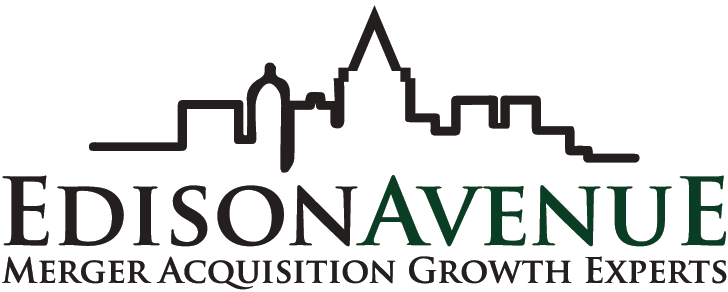Southwest/South Florida
ERIC J. GALL
M&A Intermediary
Business Broker
Tampa Bay/Orlando
ED VALAITIS
M&A Intermediary
Business Broker
800-975-2114

Sellability Index
Edison Avenue believes it is important for sellers to understand factors influencing the sellability of a business. Please add the numbers for each of the questions below.
Present Growth:
When comparing your last complete fiscal year with the previous year, how much did you grow your revenue?
Flat or lower=1
0–10% growth=2
10–20% growth=3
More than 20% growth=4.
Future Growth:
What do you project your top-line revenue growth to be over the next 12 months?
Flat or negative=1
0–10% growth=2
10–20% growth=3
More than 20% growth=4
Receivables Turnover:
When do you ask your customers to pay you?
100% upon receipt=1
Upfront deposit followed by balance upon reciept=2
Upfront deposit followed by multiple payments prior to receipt=3
100% upon agreement to buy=4.
Business Plan:
Which of these statements best describes your business plan?
Nothing formal=1
Calendar year revenue & profit goals=2
3-year revenue & profit goals=3
3-year revenue & profit goals with plans for disciplines, e.g., marketing, sales, finance, etc.=4.
Customer Diversity:
In your last complete fiscal year, what percentage of your overall revenue did your largest client represent?
More than 50%=1
25–50%=2
15–25%=3
Less than 15%=4.
Owner Involvement:
Over the past 12 months, what percentage of your revenue was a direct result of your personal sales efforts (or those of your equity partner[s])?
More than 50%=1
30–50%=2
10–30%=3
Less than 10%=4.
A standard service offering describes your specialty. It outlines your unique process or the spin that differentiates you from your competitors in the same industry. If you sell a product, it can be your unique approach to providing your product. Usually, a standard service offering is branded and has a unique name that you own.
Product Diversity:
Given the definition above, over the last 12 months, what percentage of your revenue came from your standard service offering?
Less than 50%=1
50–75%=2
75–90%=3
More than 90%=4.
Transaction Rate:
Which of the following frequencies describes how often your customers need to buy your product or service?
Only once=1
Once every few years=2
Every year=3
More than once per year=4.
Management:
Which of the following statements best describes your management team?
No team=1
Couple senior people acting as informal leaders=2
Managers in charge of sales/marketing and production=3
Management team with compensation package providing long-term incentive to stay with company=4.
Employee Turnover:
What percentage of the employees that were with you 12 months ago are still employed by your company today?
Less than 50%=1
50–75%=2
75–90%=3
More than 90%=4.
Scoring:
10-20 Business is a difficult sell. Sale requires effort to improve the business fundamentals.
21-30 Business is marginally saleable and under normal circumstances should sell in 1 to 2 years.
31-40 Business is saleable and under normal circumstances should sell in 3-12 months.
Primary determiners of price:
Past performance – Businesses typically sell at or around industry multiples for revenue and cash flow/EBIDTA. In rare circumstances, buyers will pay for forecast or projected performance on an earn-out basis.
Individual needs – Buyers will expect a fair salary for managing the business. This salary is expected to be at or near the average salary for a non-owner business manager.
Debt service – Buyers and their financiers will expect debt coverage, i.e., average monthly cash flow or EBIDTA to monthly principle and interest payment, greater than 2:1 or 3:1 depending upon the size of the company and risk.
Investment return – Beyond the salary for managing the business, the buyer will expect to receive a return on his/her investment or down payment commensurate with the risk, usually 15 to 20%.
Other determiners of price:
Industry cycles – Businesses experiencing industry cycle may sell at a higher or lower price depending upon the timing of the transaction. Businesses should sell at their highest price immediately before the industry peak.
Seasonality – Businesses experiencing seasonality may sell at a higher or lower price depending upon the timing of the transaction. Businesses should sell at their highest price immediately before the seasonal uptick.
Assets – Businesses with idle assets are typically discounted by buyers because of the cost and distraction of disposing of the idle assets.
Cash sale – Cash sales in today's market are rare. Cash transaction historically sell at 70% of list price.
Financing – In today's tight capital markets, bank financing can be difficult. Seller financing is almost a given. Seller financed transactions historically sell at 86% of list price.
Interest rates – Low interest rates provide the buyer with improved cash flow, a better return on investment, and benefit the selling price of the
business.
Strong management – Experienced management who can run the business with an absentee owner and is committed or locked-in to staying can reduce or eliminate the deduction a buyer expects as a salary and increase the price of the business.
Proprietary technology – Patents, copyrights and other proprietary technology providing a sustainable competitive advantage increases the value of a business.
Financial synergies – If a buyer is able to combine the business with an existing business, he/she may be able to reduce overhead, improve cash flow, and pay more for the business.
Geographic location – Desirable locations increase the number of potential buyers which may or may not result in a bidding war. If a bidding war results, the price will likely increase.
Strategic fit – Certain buyers may see a strategic benefit with other owned businesses. Benefits may include shared customers lists, make vs. buy cost reduction, etc..
Risk perception – Risk factors can be measured internally, e.g., the buyer's own confidence in managing the business, as well as externally, e.g., the economic forecast, industry and competitive trends, etc..